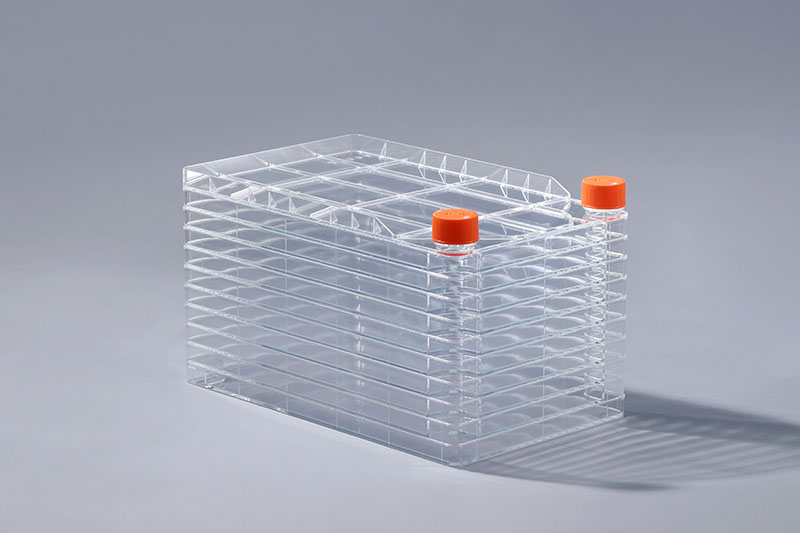The development of cell culture technology has been very mature so far, and it has been widely used in the preparation of monoclonal antibodies, vaccine production, scientific research and other fields. Cell culture requires the help of cell consumables. There are various types of consumables on the market. Among them, the cell factory is a kind of consumable with special structure.
Different from other bottle-type consumables, Cell Factory is a special consumable with a multi-layer structure. Common specifications include 1 layer, 2 layers, 5 layers, 10 layers, 40 layers, etc. When culturing cells, the medium is poured into the inner layers, and the cells are attached to the bottom to grow and multiply. Due to the high number of 10-layer and 40-layer layers, it is difficult to operate after adding the medium. Generally, it is used together with an automated shaker. It can realize the programming, automation and efficiency of large-scale cell culture, thereby Greatly reduce labor intensity and density.
The use of this multi-layer structure has a large culture area, which can save space, reduce manual operations, and reduce the risk of contamination. In terms of culture area, the culture area of a 10-layer cell factory is equivalent to 36 T-175 cell culture flasks. The layers are connected by a special welding process, which can ensure the stability of the internal environment and create a good growth environment for cell growth.
At present, cell factories have gradually replaced some traditional cell culture consumables and become mainstream consumables in the fields of biopharmaceuticals and scientific research. With the rapid development of the biopharmaceutical industry, the future growth space of this consumable is worth looking forward to.
The FAI climbed 5.9 percent year-on-year in the first 11 months of 2018, quickening from the 5.7-percent growth in Jan-Oct, the National Bureau of Statistics (NBS) said Friday in an online statement.
The key indicator of investment, dubbed a major growth driver, hit the bottom in August and has since started to rebound steadily.
In the face of emerging economic challenges home and abroad, China has stepped up efforts to stabilize investment, in particular rolling out measures to motivate private investors and channel funds into infrastructure.
Friday's data showed private investment, accounting for more than 60 percent of the total FAI, expanded by a brisk 8.7 percent.
NBS spokesperson Mao Shengyong said funds into weak economic links registered rapid increases as investment in environmental protection and agriculture jumped 42 percent and 12.5 percent respectively, much faster than the average.
In breakdown, investment in high-tech and equipment manufacturing remained vigorous with 16.1-percent and 11.6-percent increases respectively in the first 11 months. Infrastructure investment gained 3.7 percent, staying flat. Investment in property development rose 9.7 percent, also unchanged.
 English
English



















































